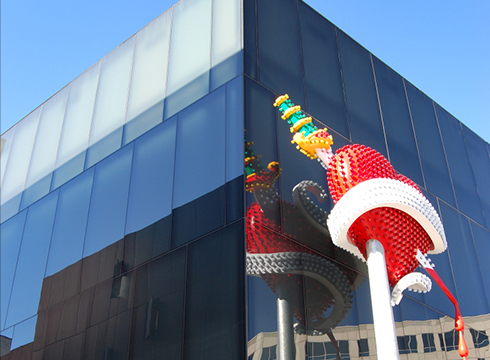

Princeton University Art Museum
Princeton, New Jersey, USA
- Area
13,378 m² / 144,000 ft² - Category
Culture, Education - Design Architect
Adjaye Associates - Architect of Record
Cooper Robertson - Client
Princeton University - Landscape Architect
James Corner Field Operations - Mechanical/Electrical Engineer
Kohler Ronan - Construction Manager
LF Driscoll - Structural Engineer
Silman - Civil Engineer
Nitsch Associates - Lighting
Tillotson Design Associates - Audiovisual and IT
Harvey Marshall Berling - Security
Layne Consultants International - Sustainability
Vidaris - Award
- Honorable Mention for Unbuilt Cultural Building, Architect’s Newspaper Best of Design Award, 2021
Technical Info +
The reconstruction of the Princeton University Art Museum is conceived as a campus within the campus, a space of genuine inquiry where the exhibition of diverse practices, learning as a synthesis of knowledge and cross-cultural connections weave together into a singular experience that encompasses a multiplicity of ideas and peoples.
The new building will rise on the site of the current Museum, at the heart of Princeton’s storied campus, placing its globe-spanning collections in the daily path of the University community and serving as a welcoming gateway for visitors from around the world. The design inserts itself dynamically into campus life with key pedestrian pathways flowing into and through the Museum via two “art walks”—thoroughfares that function as the new building’s circulatory spine. Seven “pavilions” scale the size of the new building to account for the historic buildings nearby and to allow for more varied gallery experiences. The design also shapes a new home for the University’s Department of Art & Archaeology, while retaining Marquand Library; together, the three units will continue to function as a dynamic center for research and teaching.
The design of the new building allows the Museum’s globe- spanning collections to be exhibited substantially on a single level, shaping new ways of encountering the collections, privileging ideas of cultural contact and exchange, and fostering new modes of storytelling. By challenging the traditional hierarchies inherent in multilevel gallery display, the Museum will foster moments of discovery and surprise as visitors encounter ideas and objects in narratives that move beyond the boundaries of geography and chronology. This approach brings architecture and curatorial practice together in a manner that is rare among major cultural institutions.

Related

Princeton University Art Museum unveils David Adjaye’s design

Ethelbert Cooper Gallery

Museum of Contemporary Art Denver
